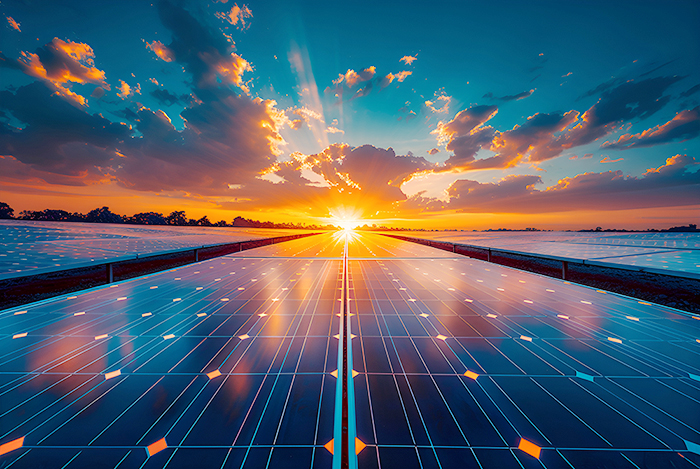In recent years, household PV, as an important part of China's energy transformation, has experienced rapid development from scratch, from weak to strong. With the changes in the policy environment and fluctuations in market demand, the household PV industry is also facing many challenges and opportunities.
1. Policy-driven market change
In recent years, the National Energy Administration (NEA) has issued a number of policies to provide strong support for the development of the household PV market.2024 In October, the NEA issued the revised "Administrative Measures for the Development and Construction of Distributed Photovoltaic Power Generation (Exposure Draft)" (hereinafter referred to as the "Exposure Draft"), which makes it clear in Article 36 that Distributed photovoltaic power generation projects need to participate in the electricity market in accordance with the relevant provisions of the state, which marks the household photovoltaic "into the market" has been finalized. This policy change has a far-reaching impact on the household PV market. According to the National Energy Board data, 2023 household PV installed capacity reached 43.48GW, a record high. However, with the rapid growth in the scale of distributed PV installation, some areas have emerged as a consumption problem. The introduction of the "Exposure Draft" is aimed at guiding the reasonable access to distributed PV and the efficient consumption of electricity through market-based mechanisms, and promoting the optimal allocation of power resources. In addition, the "Exposure Draft" also for the first time a clear "non-natural person household" project type, giving the non-natural person for household project filing rights, to solve the long-term household project investment subject and the subject of the filing of the inconsistent problem. According to estimates, China's household PV market has a huge capacity of more than 1600GW, it is expected to install more than 80 million household PV roofs, the current penetration rate is only about 10%, with huge growth space and development potential.
2. Market Status and Challenges
Despite the optimization of the policy environment, the household PV market is still facing many challenges. On the one hand, with the gradual reduction of grid-connected capacity and the rapid growth of distributed PV installed capacity, some regions have experienced consumption problems. According to the National Energy Board data, at the end of 2023, in the six pilot provinces that carry out the assessment of the carrying capacity of distributed PV access to the grid, there are different degrees of consumption problems. On the other hand, after distributed PV participates in market-oriented trading, power plant operators need to face a more complex market environment and competitive pressure. According to the China Photovoltaic Industry Association, as of the end of September 2024, the cumulative installed capacity of distributed PV reached 340 million kilowatts, accounting for 44% of the total installed capacity of PV. With the continuous expansion of the installed capacity, the market competition will become more and more intense, and power plant operators need to continuously improve their operational and risk management capabilities. In addition, the household PV market is also facing problems such as technological upgrades, cost reductions, and financing difficulties. However, with the continuous progress of technology and the continuous support of policies, these problems are gradually being solved. For example, in recent years, the cost of household PV power plants has continued to fall, and the price-performance ratio has continued to improve, which has promoted the popularization of the market and the masses. At the same time, the government has also introduced a series of financing support policies to help small and medium-sized enterprises (SMEs) and farmers solve their financing problems.
3. Development trend and confidence
Although the household PV market is facing many challenges, the development trend of the industry is still positive. Continuous growth in installed capacity: According to the latest data released by China Photovoltaic Industry Association (CPIA), in the first 10 months of this year, China's PV power generation installed capacity amounted to 181.3 gigawatts (GW), a year-on-year growth of 27.27%. Among them, distributed photovoltaic contribution is outstanding, the total installed capacity of 96 GW, accounting for 52.97%. Green power green certificate trading is booming: green certificates can both realize the metering of renewable energy electricity and represent the atmospheric environmental contribution of the unit of electricity produced by renewable energy. According to the National Development and Reform Commission data, from January to August 2024, China's green power trading power reached 177.5 billion kWh, up 223% year-on-year; green certificate trading exceeded 200 million, up nearly five times year-on-year.
Market confidence is gradually increasing. Although policy changes have increased market uncertainty in the short term, in the long term, the principle of centralized and distributed remains unchanged, and the market has a stable growth space. According to the International Energy Agency (IEA) forecast, by 2030, distributed PV will increase from the current 694.4GW to 2,353.5GW, the industry development prospects are fully expected.
Domestic household rooftop PV realizes rapid development, demand continues to be released, and new gigawatt-level markets continue to emerge. The installed scale of household rooftop PV power generation in Jiangsu and Anhui amounted to 6.7 GW and 3.1 GW respectively, and the installed capacity of household rooftop PV power generation in Shandong, Shanxi, Hebei, Liaoning, Zhejiang and other provinces has broken GW.
In addition, with the continuous progress of technology and cost reduction, the cost-effectiveness of household PV power plant will be further enhanced. For example, in recent years, the cost of residential PV power plants has continued to decline, making more farmers and enterprises can afford the installation costs. At the same time, the government has also introduced a series of supportive policies, such as tax incentives and financial subsidies, further promoting the popularization and massification of the household PV market.
In the future, distributed photovoltaic in agriculture and rural areas, transportation, construction and other areas of application will also continue to deepen, and the integration and development of various industries will be closer, and will be deeply integrated with energy storage, smart grid and other technologies to form an integrated development.
"Micro-grid has become an important means to improve the carrying capacity and consumption capacity of the distribution grid and solve the stable operation of distributed renewable energy under the new power system." At the Smart Energy Forum, Sun Shumin, chief expert of the State Grid, focused on the development of micro-grids. Today, many places will layout renewable systems when building micro grids. For example, in the zero-carbon park, all green electricity, the production of products in line with the carbon tariff requirements, but also reduce carbon taxes, improve product competitiveness, which will become a market hotspot in the future of new energy construction.
In the future, distributed photovoltaic in agriculture and rural areas, transportation, construction and other areas of the application will also continue to deepen, and the integration of the development of various industries will be more closely, will be with energy storage, smart grid and other technologies in-depth fusion, the formation of integrated development. It can also be developed through the whole village mode, transforming the original distribution network in the countryside, realizing the centralized development, design, construction, operation and maintenance, management and high-voltage grid connection of the power station, constructing multi-scenario intelligent micro-grid solutions, and achieving the integration of development, distribution, use (charging) and storage dynamic regulation through the intelligent scheduling center to allow household PV to play a greater role in benefits, and to enhance its system stability, adjustability and intelligent level.
Overall, in the distributed photovoltaic power generation project development, the future business should focus on four points: one is to participate in the power market in accordance with the relevant provisions of the state; two is to enhance the project information technology, digitalization, intelligent level, to achieve the observable, measurable, adjustable, controllable; three is to centralized convergence and grid can improve the carrying capacity of the grid; four is to change the positioning, focusing on the energy management services, upgrading and upgrading of off-grid type system, and so on.

Looking ahead, we have reason to believe that the household PV industry will usher in a better tomorrow. With the acceleration of the global energy transition and the proposal of “double carbon” goal, household PV, as an important representative of clean energy, will usher in a broader development space. At the same time, with the continuous progress of technology and policy support, the cost-effectiveness of household PV power plants will be further improved, promoting the popularization of the market and the masses.







